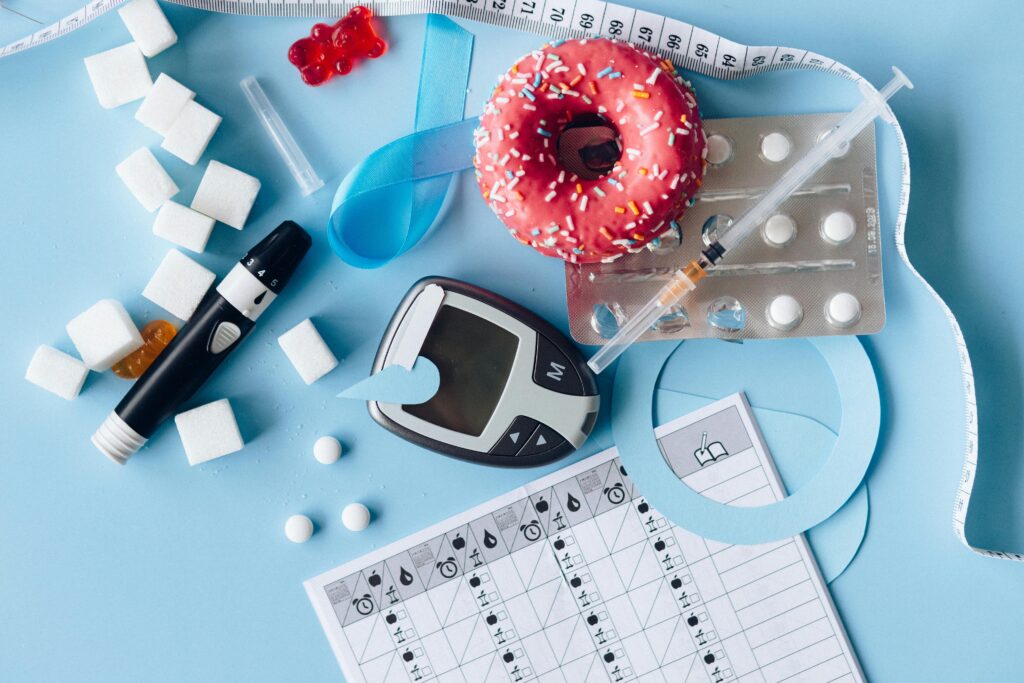Ozempic
What is Ozempic?
Ozempic® (Semagltide) is a once a week, injectable medicine indicated to manage type 2 diabetes or to reduce the risk of future cardiovascular events in people with type 2 diabetes.
It mimics the action of GLP-1, and naturally occurring hormone that helps to regulate blood glucose levels. By binding to and activating the GLP-1 receptor, this medicine stimulates insulin secretion and lowers glucagon secretion, when the blood glucose levels are high. It also causes slowing down in how fast the stomach empties. In addition, it promotes satiety by direct actions on the satiety centers in the brain. This combination of mechanisms, help lower the glucose levels in the blood and promotes weight loss.
What are the side effects of Ozempic®?
Because of its mechanism of action, Ozempic® may cause nausea or vomiting in some patients. In most cases, the nausea is mild and resolves after a couple of doses. We asked her patients take an extra 5 minutes per meal and slow down a bit during the first week or two. Some patients get mild constipation or bloating. Rarely, pancreatitis may occur. This is a rare side effect but can be serious. If you experience severe and persistent upper abdominal discomfort while taking this means, stop and call your physician.
Who should not take Ozempic®?
Ozempic should not be used in patients with a history of thyroid cancer, family history of an uncommon thyroid cancer called medullary thyroid cancer or those with MULTIPLE ENDOCRINE NEOPLASIA, type 2. Animal studies reported thyroid C—cell tumors and rats given Ozempic (just like other GLP-1 agents). This has not been reported in any human studies.
What are the available doses of Ozempic?
Usually, the starting dose is 0.25 mg injected weekly. The dose can be increased every 4 weeks, if there are no side effects, until the desired effect is obtained. The next dose is 0.5 mg weekly. For those who need higher doses, a 1 mg and a 2 mg weekly dose is also available. Each box has 1 pen and four pen needles. 1 pen usually delivers 4 doses and therefore is good for 1 month.
How to use the Ozempic® Pen?
- Wash your hands
- Take the Ozempic pen out as well as a needle tip
- Take off the cap and make sure the liquid (medicine) is clear
- Remove the needle cover
- Screw the needle onto the pen until it is tight and feels stable
- Remove the outer AND importantly the inner needle cover by pulling them
- Before you inject the first dose of Ozempic, you have to PRIME the pen which basically checks to make sure there isno air bubble and that the medicine is flowing through the needle tip. To do this you turn the “dosing dial” twice (and you will see 2 dots). You push and hold the “dose button” for 5 seconds (you should see a drop of medicine at the needle tip. The dose dialer should return to zero.
- Now you turn the “dose dial” or “dose selector” to the dose (Initial dose for most patient is 0.25 mg (note: the dial turns quite a bit till you see 0.25 in the dose window.
- Now clean the skin where you will be injecting (usually abdomen or outer thigh) with alcohol pad. Let the skin dry
- Now use the pen to poke into the skin at 90 degrees. Push and hold the dose button or plunger all the way. Wait for 6-10 seconds with the dose plunger all the way down. The dose window should show 0, if the dose was delivered successfully.
- Take out the pen, keeping it straight
- Now unscrew the pen needle using the large needle cap (by twisting it) and dispose it off using a sharps container or an empty laundry detergent bottle
- Then replace the pen cap
- Make sure to use a new pen needle for each dose. 1 pen usually gives 4 doses and therefore lasts for 4 weeks. Remember, the dose is once a week
Post Disclaimer
We are not your healthcare provider, and your use of this website does not establish a patient-client relationship. All the information contained on this website is for informational purposes only. No material on this site is intended to be a substitute for professional medical advice (diagnosis, treatment, testing or nutritional information). Always seek the advice of your physician or qualified healthcare provider with any questions you may have regarding medical or health-related conditions or treatment. Your healthcare provider knows your condition or situation well and can give you specific advice which would be appropriate for your condition/situation. Your healthcare provider can also guide you more accurately about injection techniques, dietary interventions and the use of medical technology that is most pertinent and suitable for you. Please do not disregard professional medical advice or delay in seeking it because of something you may have read on this website.

